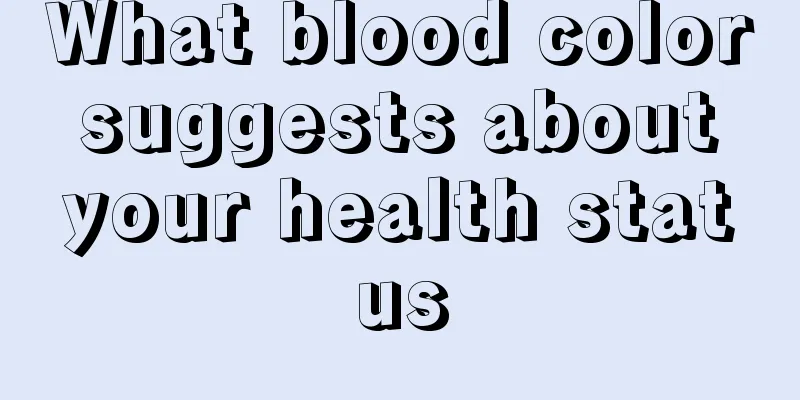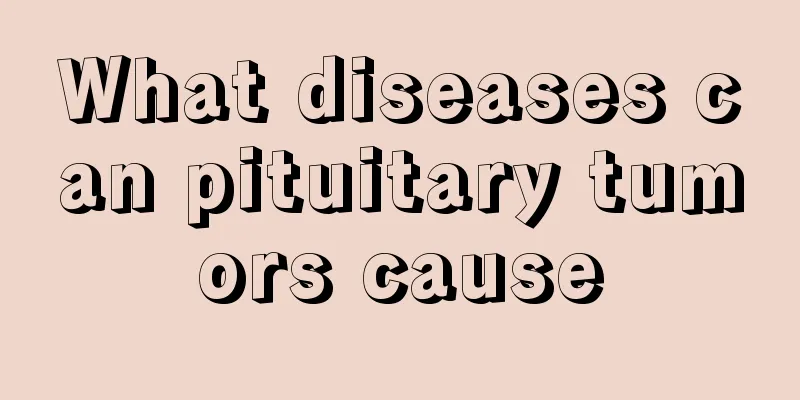What blood color suggests about your health status

|
Blood is an opaque red liquid that flows in the heart and blood vessels. Normal human arterial blood is bright red, while venous blood is dark red. If the color changes, it indicates that it is related to certain diseases, the following are common situations: 1. Light red blood It indicates that the hemoglobin level in human blood is lower than normal standard, that is, anemia, such as iron deficiency anemia, aplastic anemia, etc. At this time, people will have symptoms such as haggard and pale face, pale lips and tongue, and fatigue. 2. Dark red blood Normal venous blood is dark red, but if arterial blood is also dark red, it indicates that the human body is in a state of mild hypoxia. The blood has received more carbon dioxide than oxygen. As the degree of hypoxia increases, the blood color becomes darker and darker. This is more common in patients with emphysema and cor pulmonale. 3. Chyle (milky or turbid blood) This indicates that the human body has consumed too much high-fat, high-protein food (such as fatty meat, eggs, milk, etc.), or has diseases such as diabetes and arteriosclerosis. The former can be changed by adjusting diet, while the latter should follow the doctor's advice and actively cooperate with treatment. 4. Dark purple blood It indicates that the person suffers from severe emphysema, cor pulmonale or cyanotic congenital heart disease. These diseases will cause hypoxia in the body, reducing the oxygen and hemoglobin content in the blood. When the amount of reduced hemoglobin in 100 ml of blood rises to more than 5 grams, the blood will turn dark purple. 5. Cherry Red Blood This indicates that the human body has suffered from acute carbon monoxide poisoning, causing hemoglobin to combine with carbon monoxide to form carboxyhemoglobin that has lost its oxygen-carrying ability. At this time, not only the blood is cherry red, but the lips, mucous membranes, face, chest and inner thigh skin are also cherry red. 6. Brown or black blood It indicates that the human body has suffered from nitrite poisoning, such as accidentally ingesting food containing nitrite (pickles, stale thick-skinned vegetables, green vegetables, etc.). Nitrite is a strong oxidant that can oxidize the divalent iron in hemoglobin into trivalent iron, causing it to lose its oxygen-carrying function and leading to tissue hypoxia. |
<<: Causes of redness, swelling and pain at the tip of the nose
>>: How to get rid of scars from mosquito bites
Recommend
What are the precautions for preventing osteosarcoma recurrence
If osteosarcoma recurs, it needs to be controlled...
Does fitness during breastfeeding affect breastfeeding?
Many people have the habit of fitness. When doing...
Which cancer hospital has the best effect in treating advanced skin cancer
Which oncology hospital is good for treating late...
Standards for obesity
More and more people have realized the serious ha...
Symptoms and treatment of gallbladder and pancreatic cancer
Gallbladder and pancreatic cancer is a common tum...
Is it easy to lower high transaminase?
Transaminase is an important substance in the hum...
How to remove the core of fresh lotus seeds
Lotus seeds are generally ripe in summer. Fresh l...
Is bone cracking during exercise due to calcium deficiency?
Most young people nowadays lack the necessary phy...
The best treatment for early esophageal cancer
Due to the serious environmental pollution and th...
Can't thyroid cancer patients eat seaweed?
Patients with thyroid cancer can eat seaweed. Sea...
Conservative treatment of enlarged tonsils
It is well known that enlarged tonsils is an abno...
The best treatment for rubella in children
Children are often prone to illness because of th...
What's wrong with the small pustules on the face and neck?
A colleague of mine had a lot of small pustules o...
Diagnostic criteria for prostate cancer
Because the onset of prostate cancer is divided i...
What are the common extrapulmonary symptoms of lung cancer? Several extrapulmonary symptoms of lung cancer
About 10% of patients may experience such symptom...









